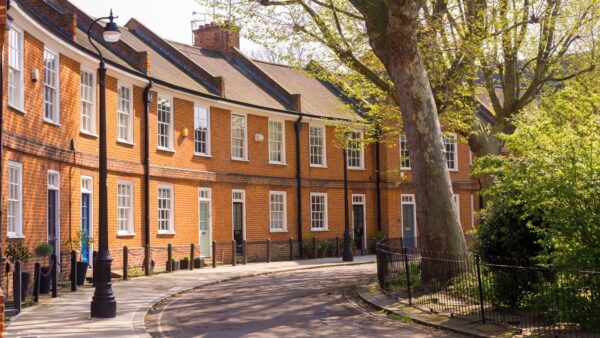Latest Posts

The Big Housing Debate: What Are UK Parties Really Promising?
With a shortage of homes, intractable planning laws and an increasing population, the UK’s housing market is a point of contention for those looking to get on the housing ladder and those already on it. For voters this year, it is a big issue.
With that in mind, what are the main parties promising the electorate they are going to do if elected to form a government?
Labour
Starting off with the current favourites to win the general election, Labour have committed in their manifesto to –
- Build 1.5 million new homes, including a preference for housing that offers more affordable rental and ownership schemes.
- Give people who rent their home more rights and stop them being removed without good reason.
- Update the National Policy Planning Framework to restore mandatory housing targets, including for mayoral authorities, and strengthen the presumption of sustainable development for new residential planning applications, particularly on brownfield urban sites.
- Take a more strategic approach to greenbelt designation and release more land for homes to be built on. New development requirements will at the same time have to focus on benefitting communities and nature.
- Increase non-resident Stamp Duty Land Tax surcharge from 2% to 3% and use the income generated from that to fund additional planning officers for development implementation, including for the development of new towns.
- Make it easier for authorities to enforce compulsory land purchase, and reduce payouts to landowners, basing compensation on actual value rather than based on the prospect of planning permission.
- Make it more difficult and expensive to purchase social housing.
- Require developers to prioritise selling new homes to first-time buyers and locals rather than overseas buyers.
- Introduce a mortgage guarantee scheme to support first-time buyers.
- Ban new leasehold flats and promote commonhold as the default tenure, as well as “tackling unregulated and unaffordable ground rent charges.” It also talks about ending the “injustice of leasehold private housing estates and unfair maintenance costs”, as well as making it easier and cheaper for lease extensions and granting more rights to manage.
CONSERVATIVES
The current party in power has committed to the following if re-elected –
- Build 1.6 million new homes, creating more flexibility by abolishing planning laws previously enforced by the EU and prioritising building on brownfield land in urban areas, whilst protecting greenbelt land.
- Focus on raising density levels in inner London to those of European cities like Paris and Barcelona and focusing on regeneration sites in Euston, Old Oak Common and Thamesmead. Outside London the focus on redevelopment will be towards the cities of Leeds, Liverpool and York.
- Require councils to set land aside for local and smaller builders as well as enforcing less planning requirements on them.
- Require local authorities to use infrastructure levies paid to them by developers to improve the local areas, such as by delivering road improvements and GP surgeries to support the new homes.
- Renew the affordable homes programme so more people can get on the housing ladder and make permanent abolishing Stamp Duty for homes up to £425k for 1st time buyers. A new Help to Buy scheme will be introduced to provide up to 20% of the cost towards a new home, requiring buyers to only have a 5% deposit (funded in part by contributions from residential developers).
- introduce a “three strikes and you’re out” policy for anti-social behaviour from social housing tenants.
- Retain the number of current council tax bands, and see where cuts can be made to costs families are making.
- Retain the rule of people not paying Capital Gains Tax on their main home, retain rules permitting people to purchase their own social housing and retain current Stamp Duty levels.
- Provide a 2 year Capital Gains Tax relief to Landlords who sell their property to their existing tenants.
- Cap ground rents at £250 and phase in a reduction to a peppercorn (ie. zero pounds).
- Make it more difficult to end a lease through forfeiture of long leases and outlaw evictions of private tenants without good reason.
- Give councils the powers to limit holiday lets.
Liberal Democrats
The Lib Dem manifesto has promised to
- Build 380,000 new homes including 150,000 social homes a year through “new garden cities” and encouraing community-led development.
- Banno-fault evictions and make 3 years the default for tenancies, as well as creating a national register of licenced landlords.
- Give local authorities the right to end people’s ability to purchase their social housing.
- Permit local councils to purchase land at current value for redevelopment rather than inflated planning-added-value rates.
- Ensure new development has better flooding protections where relevant.
- Introduce‘use-it-or-lose-it’ planning permission for developers to encourage them to build, rather than sit on empty land.
- Introduce a rent to earn scheme whereby rental payments go towards ownership in the final equity of property.
- Make homes warmer and cheaper to heat with a ten-year emergency upgrade programme, and ensure that all new homes are zero-carbon.
- Remove dangerous cladding from all buildings, while ensuring that leaseholders do not have to pay a penny towards it.
Reform
The newest “big” party has committed to
- Fast track brownfield site development applications and provide more flexibility to developers who wish to undertake large residential developments.
- Require developers to prioritise local buyers.
- Enable landlords to deduct finance costs and mortgage interest from tax on rental income to encourage smaller landlords into the market.
- Incentivise new construction technology to speed up home building.
- Require potential leasehold or freehold charges to be made clear to new home purchasers.
- Reduce costs to extend leases and for leaseholders to buy their freehold.
Greens
The Greens have committed to
- Require local authorities to spread small developments across their areas.
- Require all new developments to be accompanied by the extra investment needed in local health, transport and other services.
- Ensure that all new homes include solar panels and heat pumps, where appropriate.
- Invest:
- £29bn to insulate homes to an EPC B standard or above.
- £4bn to insulate other buildings to a high standard
- £9bn for low-carbon heating systems (e.g. heat pumps) for homes and other buildings
- Provide 150,000 new social homes and end the private right to buy scheme.
- Introduce rent controls for local authorities to manage.
- End no-fault evictions and introduce a tenants’ right to demand energy efficiency improvements.
- Create residential tenancy boards to provide an informal, cheap and speedy forum for resolving disputes before they reach a tribunal.
This article hasn’t touched on how realistic any of these policies actually are (some of them may strike you as particularly ambitious!). Their desirability will be decided by the Great British public on the 4 July!
To discuss any of the points raised in this article, please contact Josh Fraser, or fill in the below form.

A Tax Guide for Hong Kong Residents Moving to the UK
It is imperative that Hong Kongers seeking to relocate or invest in the UK ensure that they have a clear understanding of the UK tax system and seek pre-arrival tax planning advice. Income tax rates are generally much higher in the UK than in Hong Kong, and the UK also levies tax on capital gains and inheritance.
However, depending on eligibility, the UK permits non-UK individuals to benefit from a favourable tax regime while resident in the UK.
The UK’s tax system for individuals hinges on two crucial concepts: residence and domicile. These factors determine an individual’s liability to UK taxes, and they are distinct from immigration status.

Residence
An individual’s UK tax residency status is determined by the UK’s Statutory Residence Test, taking into account factors such as:
- The number of days spent in the UK
- Ownership of a home in the UK
- Employment inside or outside the UK
- Presence of UK-resident close family members
- Previous days spent in the UK in prior tax years
Non-resident individuals generally face limited UK tax liability, primarily related to UK-source income, such as earnings from UK properties, as well as capital gains on specific categories of assets.
Becoming a UK tax resident significantly expands this tax exposure to a global level; it is, therefore, crucial to plan carefully and far in advance to avoid inadvertently becoming a UK tax resident or becoming a UK tax resident having already put in place measures for UK tax optimisation for your global assets.

Domicile
Domicile, an English common law concept, centres on the place of an individual’s permanent home. A status generally inherited from one’s father at birth, domicile may change if a person relocates to a new jurisdiction with the intention to reside permanently/indefinitely. UK tax rules also deem individuals domiciled in the UK under specific circumstances, notably for long-term residents.
Domicile plays a vital role in UK taxation because:
- Non-UK domiciled individuals who are resident in the UK can claim the remittance basis of taxation for non-UK income and capital gains and
- Non-UK domiciled individuals are subject to inheritance tax only on UK-situated assets and certain offshore assets linked to UK residential property.
With longer-term residents of the UK, there is merit in building up evidence that they have not acquired a domicile of choice in the UK. Nevertheless, the UK tax authorities (His Majesty’s Revenue and Customs) may challenge domicile claims.
As Hong Kongers who relocate to the UK under the BNO visa program do so with the intention to settle in the UK indefinitely, their worldwide income and gains could be brought into the scope of UK taxation, including UK inheritance tax, highlighting the need for such individuals to obtain advice as soon as possible before they intend to come to the UK or shortly after.

Pre-Arrival Planning
Pre-arrival planning aims to arrange assets tax-efficiently in relation to their UK residence, including:
- Segregating accounts and creating a pool of funds for UK use without tax consequences, known as ‘clean capital’;
- Reviewing investments, trusts, and company holdings from a UK tax perspective; and
- Considering the tax benefits of the remittance basis of taxation for the first 15 tax years of UK residence.

The Remittance Basis
By default, UK residents are taxed on worldwide income and capital gains, known as the ‘arising basis’. However, UK resident non-UK domiciled individuals can elect to be taxed on the ‘remittance basis’. This means that such individuals are taxed on UK source income and gains as they arise, but non-UK source income and gains remain untaxed, unless remitted or brought back to the UK.
Under current rules, the remittance basis can be claimed for no charge during the first seven out of nine years of UK residence, making the UK an attractive destination in comparison to other jurisdictions. After this time, a charge applies, starting at £30,000 and increasing to £60,000. The remittance basis cannot be claimed after 15 out of 20 years of residence.

Property
For most individuals moving to the UK, purchasing a family home is a significant investment. Tax implications, as well as funding methods, should be carefully considered. Stamp duty land tax (SDLT) applies to property purchases in England and Northern Ireland, with higher rates for non-UK residents and additional rates applying for those who already own property worldwide. Seeking advice is crucial to navigating SDLT and other potential taxes related to property acquisition.
Conclusion
Relocating to the UK is a monumental decision with potentially far-reaching tax implications. The UK’s favourable tax regime, especially for non-UK domiciled individuals, presents a wealth of opportunities.
However, to ensure the most favourable tax outcomes, it is essential to seek expert advice and plan strategically, both before and after arriving in the UK. Whether you are considering the BNO visa route or other immigration options, understanding and optimising your tax position can significantly enhance your financial prospects in the UK.
To discuss any of the points raised in this article, please contact Ben Rosen or fill out the form below.

A Guide to Restrictive Covenants
Restrictive covenants are legal obligations imposed in contracts or deeds that limit the use of land or property in various ways. These covenants can affect a property’s use, and the rights of the parties involved. In addition, as they are registered on the title, and can therefore run indefinitely, they can also lead to some rather outdated and nonsensical scenarios, particularly in relation to older properties.
Matters which would have seemed completely innocuous over a hundred years ago could cause problems now. For newer properties, restrictive covenants can be designed to uphold a particular standard across a development for all residents and property owners.
What Is A Restrictive Covenant?
A restrictive covenant places certain limitations or restrictions on the use, development, or activities related to a piece of land or property. They are used to protect the interests of other property owners and/or developers.
One significant milestone in the development of restrictive covenants was the case of Tulk v. Moxhay 41 E.R. 1143 (22 December 1848). It is a landmark decision, not just in law but in the history of London, because if the Court had ruled differently, Leicester Square as we know it would not exist. Happily, (for movie premier lovers at least!) the Court recognised the enforceability of covenants that ran with the land.
The case established the principle that subsequent owners of land could be bound by restrictive covenants made by their predecessors, provided certain conditions were met.
What Makes A Restrictive Covenant Enforceable?
The following must be present for a restrictive covenant to be enforceable:
- The original parties involved must have intended the covenant to be binding and enforceable. This intention should be clear from the language used in the contract or deed.
- The covenant must relate to the land in question and significantly affect its use, value, or enjoyment.
- There must be privity of estate between the parties, which means that the covenant must “run with the land.” This ensures that subsequent owners are bound by the covenant.
- For a subsequent owner to be bound by a restrictive covenant, they must have had notice of the covenant’s existence. Notice can be actual, constructive, or imputed.
- Courts may refuse to enforce a restrictive covenant if it is found to be unreasonable or against public policy.
How Are Restrictive Covenants Applied To New Build Properties?
Restrictive covenants in new build developments often aim to maintain the aesthetics and uniformity of the development. They may include provisions that restrict property owners from making significant changes to the exterior of their homes, such as altering the facade, installing non-approved fencing, or painting the property in a way that deviates from a specified colour palette.
Property uses which are sometimes restricted in new build developments include activities such as running a business from the premises, converting the property into a multi-unit dwelling without permission, or using it for industry.
In addition, some covenants may require property owners to maintain their homes and gardens to a certain standard. This can include keeping gardens in good condition, repairing damage promptly, and maintaining the property’s overall cleanliness. Restrictions may also be placed on the construction of outbuildings, such as sheds or garages, to ensure they do not negatively impact neighbouring properties or the overall aesthetics of the development.
Will A Restrictive Covenant Affect My Sale?
When it comes to new build developments, it can be seen that restrictive covenants can be beneficial. The prohibition from changing the outside of the property, for example, ensures that an attractive environment together with uniformity is achieved whilst properties are being bought and sold.
More commonly in older properties, where the covenant is often decades old, if the covenant is considered onerous or has been breached inadvertently remedies are available.
- Indemnity Insurance: If the beneficiary of the covenant cannot be identified, obtaining indemnity insurance can provide protection for both the current owner and future buyers against potential enforcement of the covenant. This insurance covers the costs associated with dealing with the covenant.
- Negotiating a Release or Variation: If the beneficiary of the covenant is known, negotiations can be initiated to secure a release or variation of the covenant. This involves altering the covenant’s terms or removing it entirely.
- Lands Tribunal Challenge: If you believe that the restrictive covenant no longer serves a practical purpose and meets the criteria outlined in section 84 of the Law of Property Act 1925, you have the option to challenge it through the Lands Tribunal. If successful, this process can lead to the removal or modification of the covenant, simplifying the property’s sale.
During the sale process, it is crucial to collaborate closely with a solicitor well-versed in property law who can provide expert guidance, whether it involves obtaining indemnity insurance, negotiating with the beneficiary, or pursuing legal action in the Lands Tribunal to remove or modify the covenant.
How Are Restrictive Covenants Enforced?
In recent years, the Courts have been inclined to take a more flexible approach to restrictive covenants, particularly when considering their reasonableness. The test of reasonableness often involves weighing the competing interests of the parties involved, balancing the benefit gained by the party seeking enforcement against the detriment suffered by the party in breach. Overly, restrictive covenants can hinder economic development and impede progress. Consequently, the Courts may refuse to enforce covenants that are deemed unreasonable or contrary to public policy.
The ancient law of restrictive covenants must strike a balance between protecting property rights and facilitating development and progress. Developers and property owners should take expert legal advice from a Residential Property Law Solicitor if they have any concerns regarding implementing or breaching restrictive covenants.
To discuss any of the points raised in this article, please contact Meera Malde or fill in the form below.